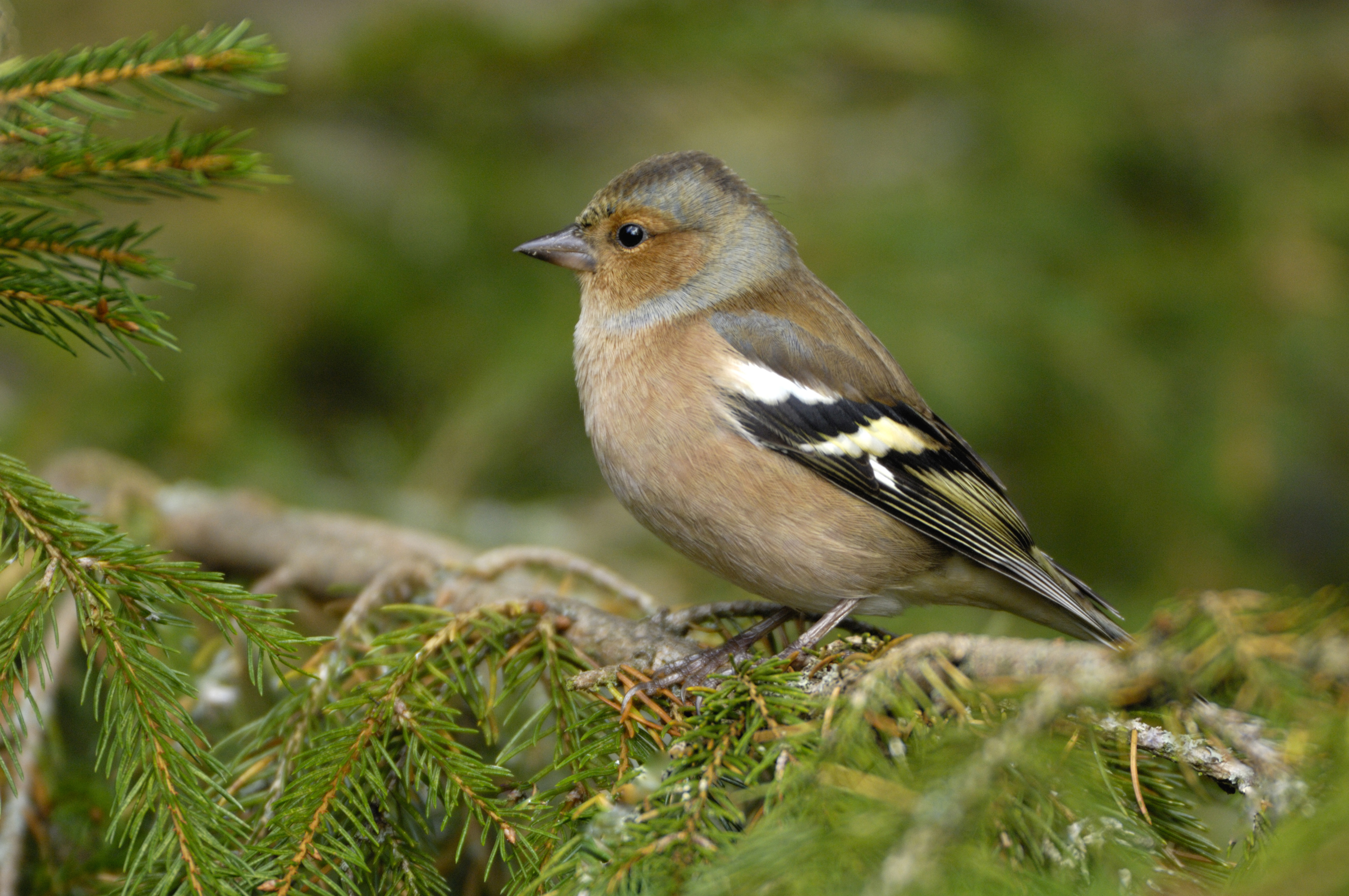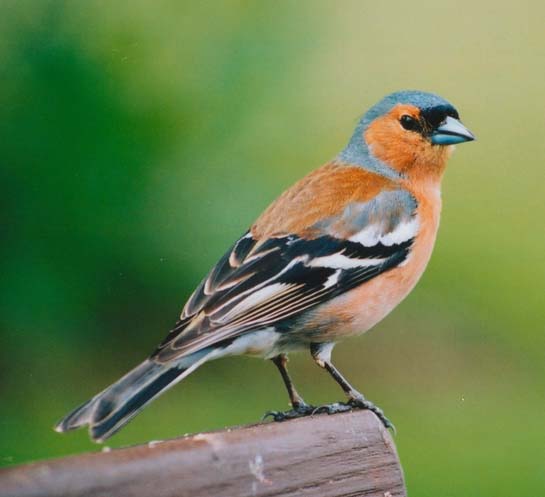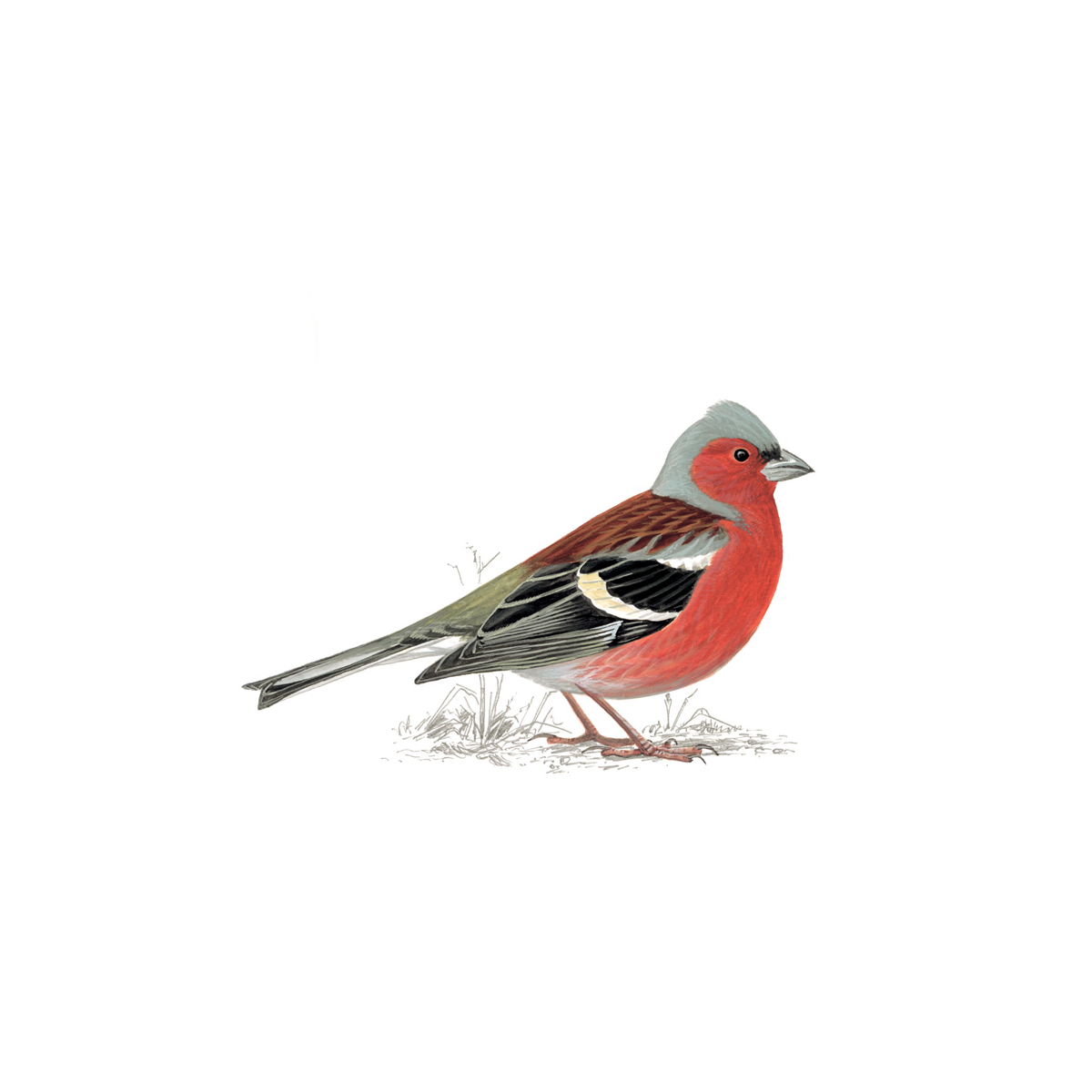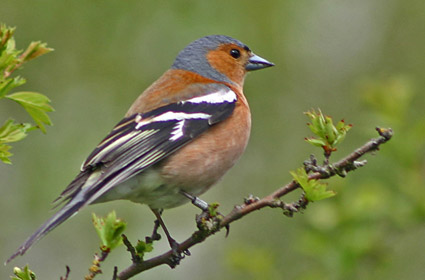
Fringilla coelebs
SUBFAMILY
Fringillinae
TAXONOMY
Fringilla coelebs Linnaeus, 1758. Seventeen subspecies are recognized.
OTHER COMMON NAMES
English: Common chaffinch; French: Pinson des arbres; German:
Buchfink; Spanish: Pinzуn Comъn.
PHYSICAL CHARACTERISTICS
Chaffinches are 5.5–7.1 in (14–18 cm) in body length, have a
wingspan of similar length, and weigh 0.7–0.9 oz (20–25 g).
They have a white patch on the shoulder, a white wing-bar, and
white markings on the tail. Males have a slate-blue back of the
head, a pink to deep-red face and breast, and a gray-blue tail.
The female is yellow-brown in color, with a lighter belly. However,
there is significant geographic variation in the coloration
and patterns of streaking of chaffinches, especially in males.
DISTRIBUTION
Chaffinches are widely distributed, occurring in almost all of
Europe, across the Middle East, through Ukraine and western
Russia to Afghanistan, and in North Africa, the Canary Islands,
and the Azores.
HABITAT
Chaffinches occur in a wide variety of woodlands and open
forests, urban and suburban parks and gardens, and fields with
hedgerows. They tend to occur in more open habitats during
the winter.
BEHAVIOR
Chaffinches are migratory in winter, but the sexes do this differently.
Their scientific name, coelebs, is derived from the Latin
word for “without marriage,” and acknowledges the preponderance
of male chaffinches that winter in northern parts of their
range, while females migrate further to the south. Studies of
banded birds have shown that more males winter in Scandinavia,
Britain, and parts of central Europe, while more females winter
in Ireland. The territorial song is a bright series of rattling notes.
FEEDING ECOLOGY AND DIET
Chaffinches forage on the ground and in trees for seeds and
fruit, including pine seeds. Unlike other kinds of true finches,
the young of chaffinches are mostly fed insect larvae, butterflies,
moths, and other invertebrates, which are regurgitated
by the parents. When the ground is snow-covered,
chaffinches will attend bird feeders, or they may gather in
farm yards to eat seed put out for domestic fowl and at barns
where seed is stored.
REPRODUCTIVE BIOLOGY
Chaffinches build a well-camouflaged, cup-shaped nest of
grasses and lichens. The nest is neatly constructed and sturdy,
and is located in a tree or shrub close to the trunk or a large
branch. The eggs are incubated for 11–13 days. Only a single
brood is raised each year.
CONSERVATION STATUS
Not threatened. The chaffinch is a widespread and abundant
species. It probably has benefited from relatively open habitats
created when older forests were converted into urbanized and
agricultural land-uses, as long as some trees, shrubs, and
hedgerows persisted.
SIGNIFICANCE TO HUMANS
Chaffinches are common, much-appreciated birds that enrich
residential and agricultural areas with their beauty and song.
They have been kept in cages as prized songbirds.
Other popular Animals
Photo Gallery of - Chaffinch




 Animalia Life
Animalia Life